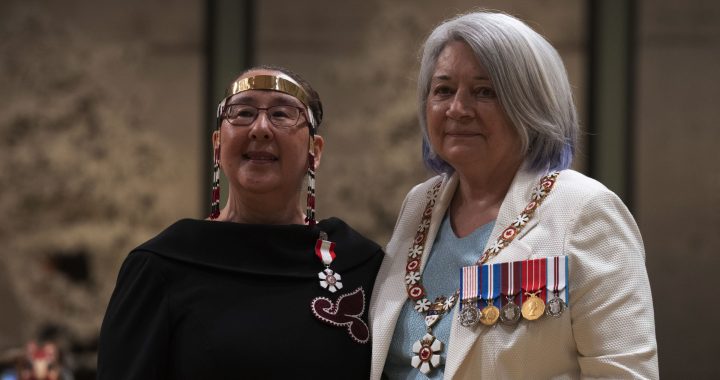The Canadian Press
WINNIPEG — A 19th-century lock of hair from one of Canada’s most controversial figures, which sits next to a pistol, is undoubtedly the most startling artifact in the St. Boniface Museum in Winnipeg.
The hair was taken from Louis Riel’s beard, shortly after he was convicted of treason and hanged, and now has a place of prominence in a museum that takes visitors back in time to the days of fur traders, missionaries and the development of the Prairies.
“After he was executed, there was what was called a coroner’s jury, which was a group of people who met with the coroner to confirm that it was Louis Riel, he was dead, and that he died in a humane way,” Aidan Prenovault, one of the museum’s interpreters, explains.
“When all that was confirmed and the coroner signed off declaring his death, (jurors) would take souvenirs from his body _ locks of his hair, they cut off his suspenders, they took the moccasins from his feet … so they could say, ‘Yeah, I was involved in executing Louis Riel.”’
The pistol that sits next to the lock of hair is said to have been purchased by Riel in Montana in 1883. Moccasins, a trunk and other goods that belonged to Riel are also on display. He is buried in a cemetery a two-minute walk away.
The museum, across the Red River from downtown Winnipeg, celebrates French-Canadian and Metis contributions to the development of the West, starting at a time when there was little relief from the harsh Prairie weather.
The building itself was built in the 1840s for a group of Grey Nuns who were brought in to the burgeoning Red River Colony to help with religious guidance, education and health care. The oak log structure is the oldest remaining building in what is now Winnipeg and served as a convent, school, asylum and the first hospital in Western Canada.
The nuns moved in about three years before the building was finished, and had little protection against the bone-chilling winters.
“Only one of the walls was up, and they were using bison hides for the rest of the walls until the building was completed,” Prenovault says.
The museum has an altar, statues and other religious items from that time, all contained in a chapel.
Other displays focus on specific eras of the West.
One section of the museum shows a model of a canoe and explains the life of fur traders who battled raging rivers and extreme weather as the Hudson’s Bay Company and the North West Company wrestled for economic supremacy in the West.
The section that includes the story of Riel celebrates the Red River Rebellion, which led to a provisional government in 1869 and the entry of Manitoba into Confederation the following year. The section explains Riel’s efforts to set up a government that would respect the rights of French- and English-speaking inhabitants, and the fighting that occurred before and after.
After Confederation, life became more settled. St. Boniface was incorporated as a town in 1883, then a city 25 years later (it would eventually be absorbed into Winnipeg). The museum shows the growing urbanization of the area.
One display shows two rooms of a typical home in the 1920s, as the inhabitants enjoy semi-modern conveniences. Gabrielle Roy, the francophone author of “The Tin Flute” who gained fame after moving to Quebec, was born, raised and taught school in St. Boniface. A quilt made by her mother is on display at the museum.
Winnipeg would lose ground to faster-growing western cities as the 20th century progressed and trade routes that didn’t involve the Red or Assiniboine rivers developed. The museum, Prenovault says, takes visitors back to an era when the area was ground zero for commerce, religion and education beyond Ontario.
“Winnipeg _ the Red River settlement _ was a hub.”
The Canadian Press










